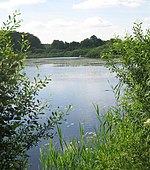Tjörnarp
Populated places in Höör MunicipalityPopulated places in Skåne CountySkåne County geography stubs

Tjörnarp is a locality situated in Höör Municipality, Skåne County, Sweden, with 731 inhabitants in 2010.
Excerpt from the Wikipedia article Tjörnarp (License: CC BY-SA 3.0, Authors, Images).Tjörnarp
Ellagränd, Höörs kommun
Geographical coordinates (GPS) Address Nearby Places Show on map
Geographical coordinates (GPS)
| Latitude | Longitude |
|---|---|
| N 56 ° | E 13.616666666667 ° |
Address
Prästabonnaskogen
Ellagränd
243 71 Höörs kommun
Sweden
Open on Google Maps






